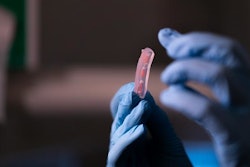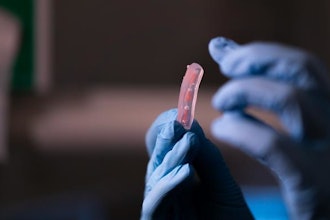
Oils, shampoos and even chewing gum: the substance cannabidiol (CBD), an extract of the hemp plant, is currently very popular and can be found in many everyday products.
However, it is not clear whether these products really contain what they say they do.
Researchers at Martin Luther University Halle-Wittenberg (MLU) have developed a simple, inexpensive and precise way of analyzing CBD oils. It allows them to detect not only CBD but also a variant of the mind-altering substance tetrahydrocannabinol (THC). The study was published in Results in Chemistry.
CBD is said to have many health benefits.
"For example, consumers swear by its relaxing and pain-relieving properties, even though there is no serious scientific evidence for this," said Professor René Csuk from the Institute of Chemistry at MLU.
Products containing CBD, such as oils, shampoos and chewing gum, are nevertheless gaining in popularity. CBD oils are produced by diluting the extract from the hemp plant with a vegetable oil.
"Their quality must be assured and it is important to protect consumers from scams," said Csuk.
There are no limits on CBD concentrations, however, there are for the amount of THC they can contain, which can lead to intoxication in humans. A variant of THC naturally occurs in hemp plants and the oils may contain no more than 0.2%.
The method for detecting CBD and THC used to be relatively complex.
"Now we are able to analyse the substances faster, using fewer steps and using cheaper equipment that is available in many laboratories. Nonetheless, even low concentrations can be reliably detected," said chemist Theresa Schmidt, first author of the new study.
To do this, the researchers use high-performance thin-layer chromatography.
"It basically works like the school experiment, where petroleum spirit is poured over shredded leaves and a piece of chalk is placed upright in the mixture. The petroleum-chlorophyll solution travels up the piece of chalk and the green separates into different dyes," explained Schmidt.
The same principle can be used to separate the constituents of the oils. These can then be analyzed to determine which substance and how much of this substance they contain.
The study tested products based on olive oil, sunflower oil and hemp seed oil.
"It only takes 30 minutes to prepare the sample and conduct the analysis instead of the one to two hours the previous method needed. Up to ten samples can be processed at one time," said Schmidt.
Twelve of the oils tested contained about as much or slightly more CBD than indicated on their packaging. However, no CBD could be detected in three of the oils, even though they purported to contain up to 30% CBD. The THC content was within the legal limits.
While the tested samples were all safe to consume, the researchers suspect that harmful oils are becoming increasingly widespread on the European market.
"We fear that dubious traders will soon mix in synthetic THC variants that do not naturally occur in hemp plants," said Csuk.
These substances would fall under the Narcotics Act and could not be sold freely. The researchers are therefore working on being able to detect these THC variants quickly and cheaply in the future.






















